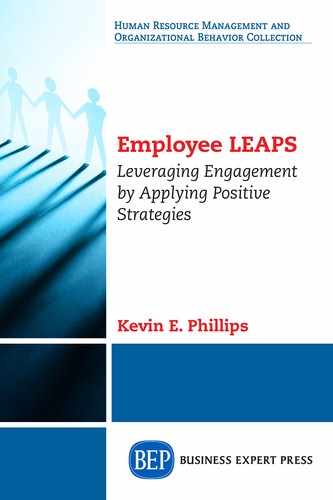Businesses range from engaging workplaces filled with energy and excitement, to debilitating environments that challenge the resilience of employees to show up each day; experiences in which people achieve extraordinary results due to an unrelenting desire to succeed, to times when individuals accomplish nothing while counting the moments until they are released from their shift; instances when entering the office produces unparalleled excitement, to days that make it a chore to fulfill even the simplest of tasks.
The reason why there is a difference is simple. Employees who are captivated by their work and produce exceptional results have a passion for their job, develop a vested interest in success, and maintain an emotional connection to their workplace and colleagues. They are engaged! Conversely, employees who lack engagement don’t care about their company, struggle to get through the workday, and are indifferent toward the success of the organization. Not surprisingly, companies that have engaged employees deliver results far superior to those that do not.1
Employee LEAPS: Leveraging Engagement by Applying Positive Strategies (LEAPS) has been written to increase employee engagement and optimize workplace performance. By harnessing the power of engagement and nurturing people’s innate desire to be captivated by the activities in which they are involved, Employee LEAPS has the potential to transform organizations and facilitate remarkable outcomes that extend far beyond what could be achieved otherwise.
While this book does not possess all the answers, nor can it provide an instant cure for the ailments of organizations that are struggling, it does present appropriate perspective on why companies with dedicated employees are more successful, positive strategies that can be used to generate engagement, and most importantly, a step-by-step process for developing your organization’s Engagement Plan. Additionally, Employee LEAPS presents 47 Positive Engagement Practices that can be used in your organization.
This book is primarily focused on businesses. However, the opportunity to increase engagement in schools, communities, social groups, and other group settings is encouraged. Regardless of the situation, LEAPS provides the opportunity to create a collection of individuals working to achieve something far superior to personal success. LEAPS increases organizational capacity and unleashes talent, enabling people to produce exceptional results.
Employee LEAPS has five parts. Part I covers the current state of the workplace, paying particular attention to both the challenges that organizations have with engagement and opportunities that can be leveraged to increase productivity. Additionally, the three overarching drivers of engagement are discussed. The three drivers are:
Serving a valuable purpose
Being empowered to deliver results
Working in a fulfilling environment
These drivers are fundamental elements of the book; each positive strategy and practice shared in the text include at least one driver. The benefits companies experience from having engaged employees are presented at the end of Section 1.
Part II shares opportunities where LEAPS can be most beneficial. When dysfunction restricts the ability for an organization to function effectively, a tragedy causes everything to fall apart, or the desire to start something from scratch is present, the importance of developing and maintaining engagement cannot be overstated. By leveraging engagement and incorporating positive deviance, uncommon, yet successful strategies provide the opportunity for superior outcomes to emerge.
Part III delves into situations in which LEAPS can be used to enhance current strengths. Areas of focus include bolstering strong teams, empowering employees, and providing benevolence and goodwill to new members and visitors. By using LEAPS in these settings, people develop stronger connections with one another and possess a greater willingness to put forth effort to achieve positive results.
Part IV requires reflection and analysis. Unlike the other sections in the book, these chapters encourage readers to take an objective assessment of their organization and make changes to improve engagement. The material in this section is designed to provoke thoughtful consideration that requires genuine organizational and personal evaluation.
Part V is designed to help you write your organization’s Engagement Plan using a systematic approach to create a customized plan. Development of this plan will help you increase employee engagement and optimize workplace performance. This will ultimately deliver better business results.
Finally, there are two appendixes. The first appendix provides a brief summary of the actions leaders of departments interested in using LEAPS can take when their organization does not support leveraging engagement corporately. This appendix is designed to help leaders of departments use LEAPS without disrupting their allegiance to the organization.
The second appendix has 47 Positive Engagement Practices that provide ways to improve employee engagement. These practices are proven methods of generating engagement and harnessing the collective abilities that individuals in organizations possess. The appendix is broken up into different categories, enabling people (and organizations) to select the positive practice that aligns best for their specific situation.
Through it all, Employee LEAPS addresses challenges that organizations face while providing strategies to increase productivity and encourage employees to give their absolute best. Further, to provide context for how engagement and productivity are closely linked in an authentic manner, this book provides real-life examples of situations that have occurred in the workplace and everyday life. These genuine stories demonstrate how contrasting levels of engagement produce exceptional results or crush motivation.
LEAPS is a powerful way to bring out the best in employees and optimize workplace performance. With that in mind, you are encouraged to use Employee LEAPS to transform your organization and take it to the next level.
